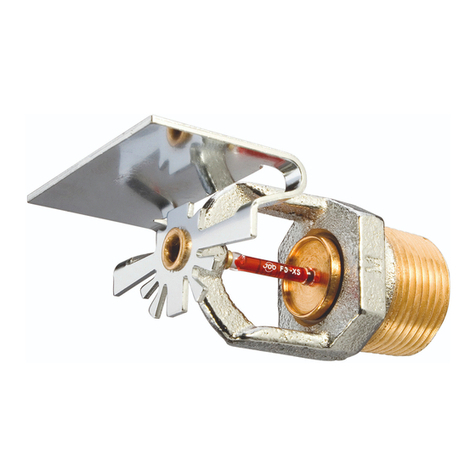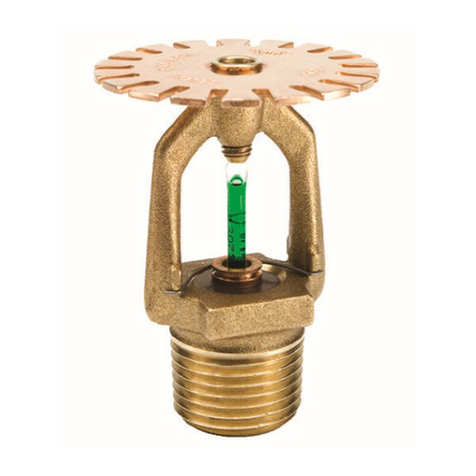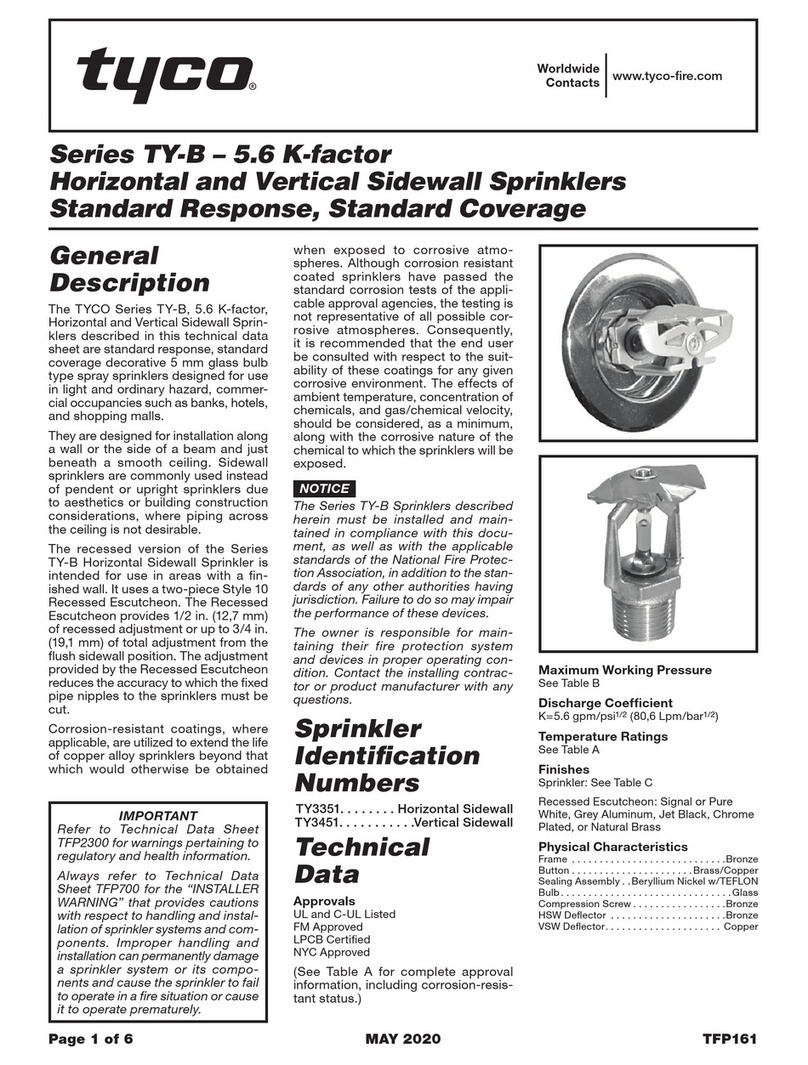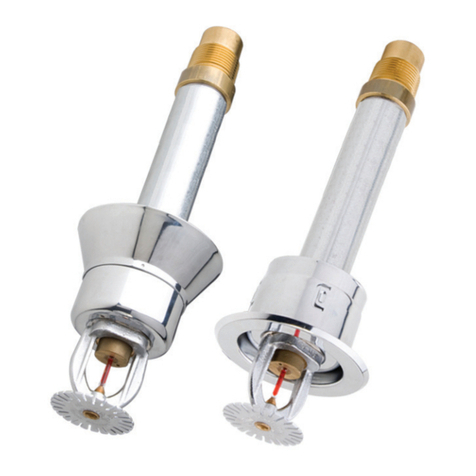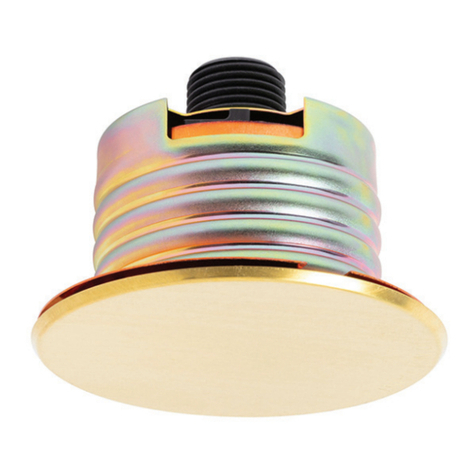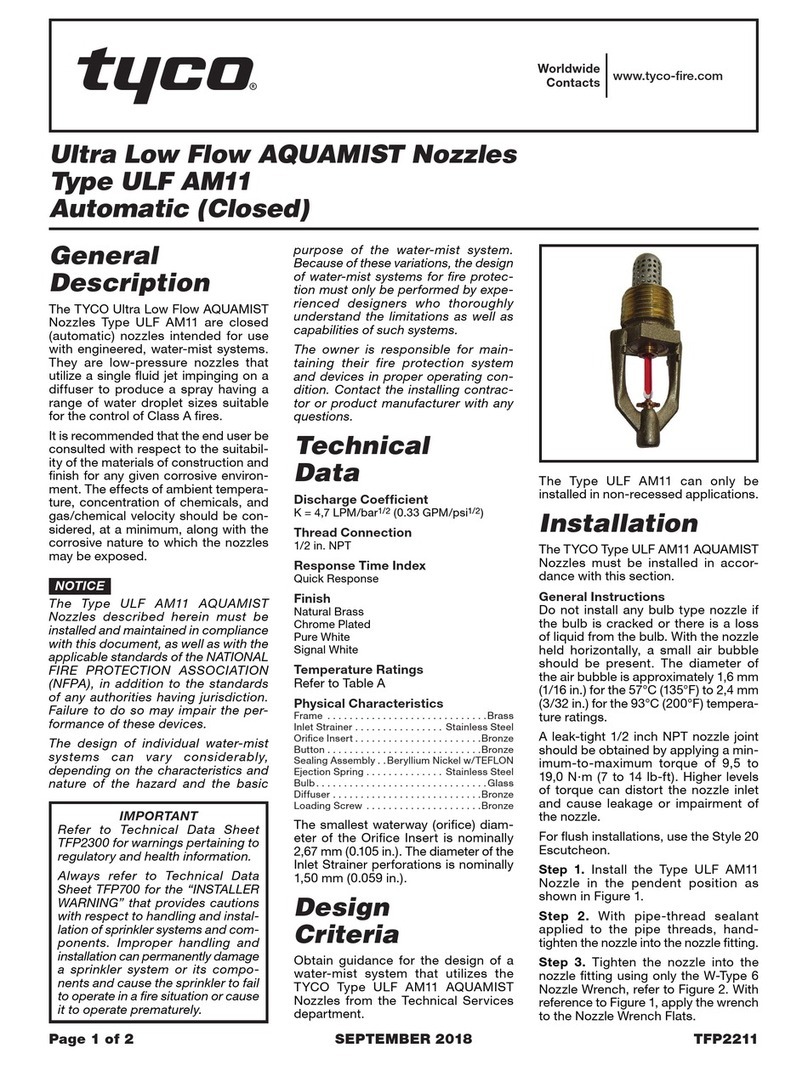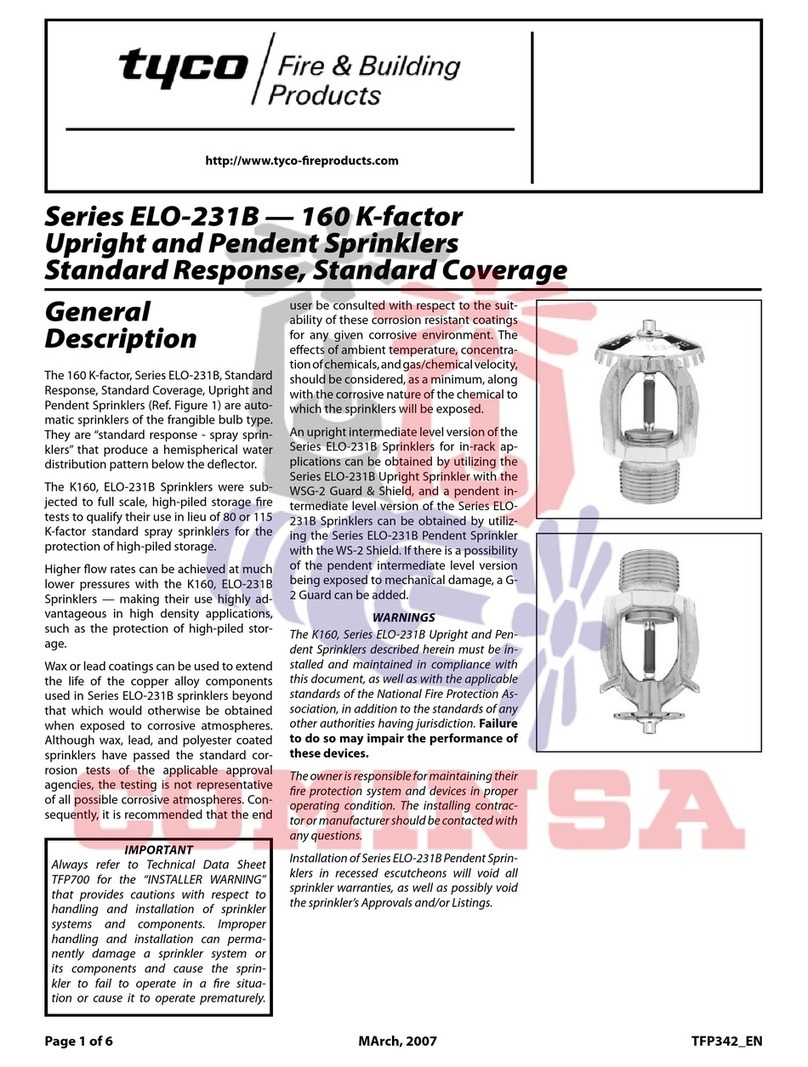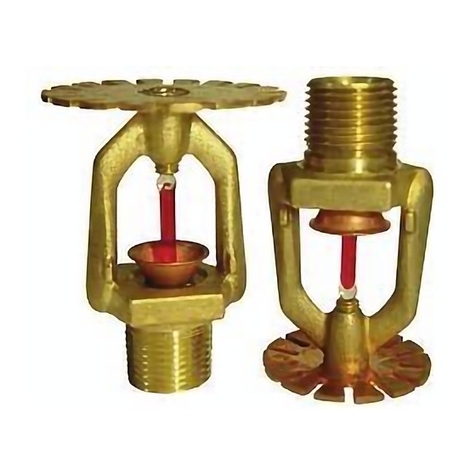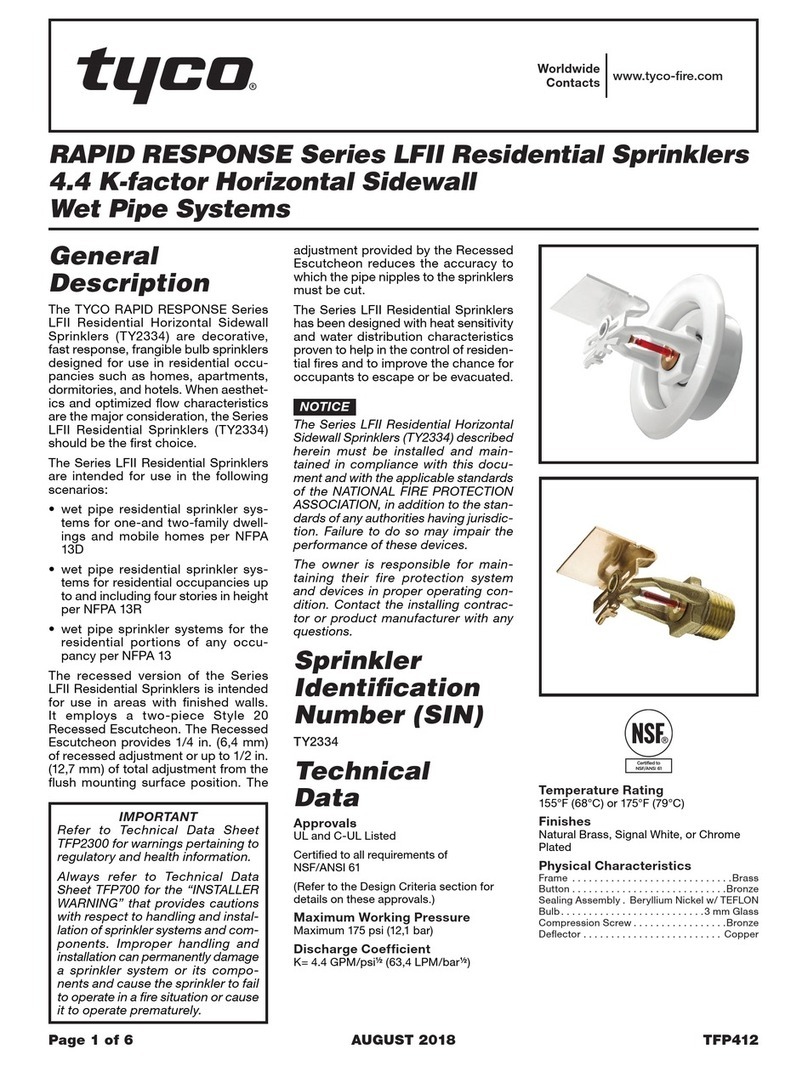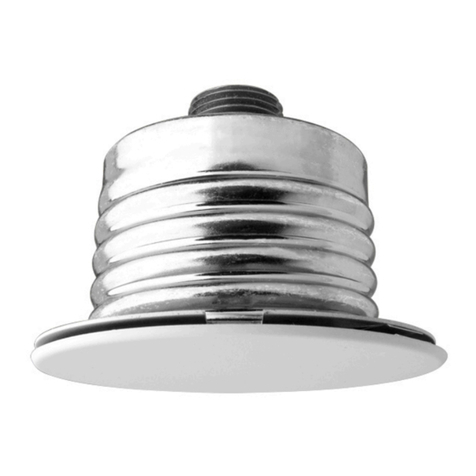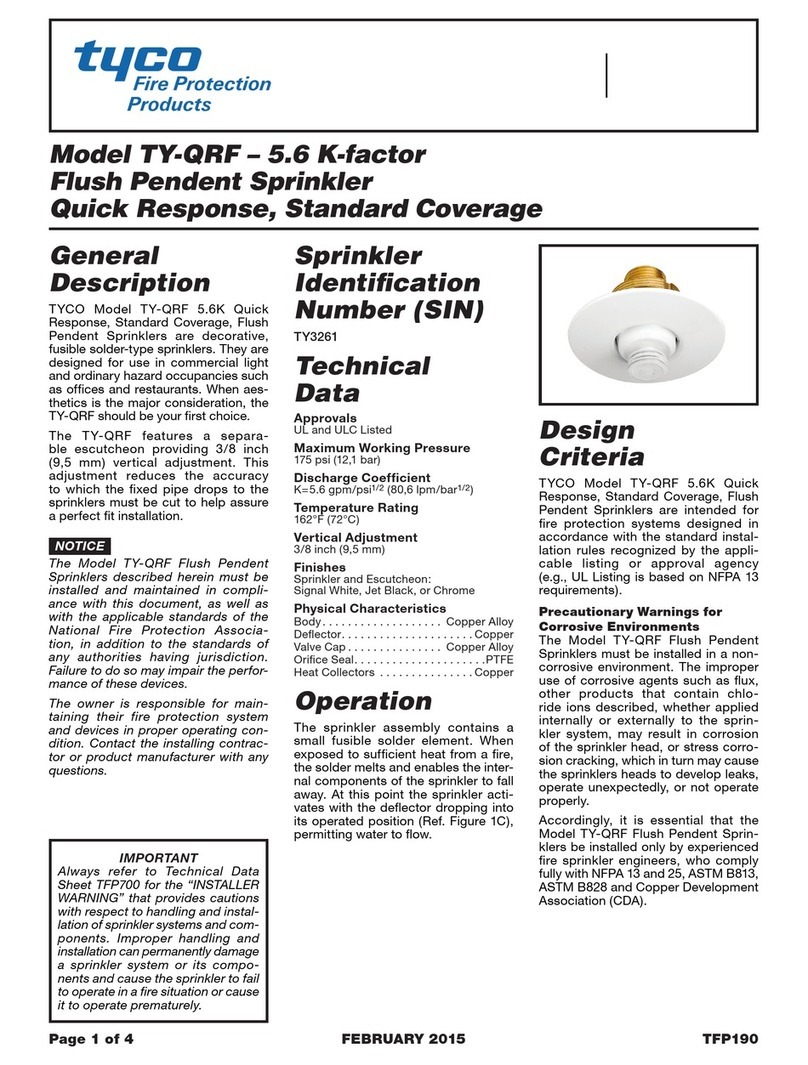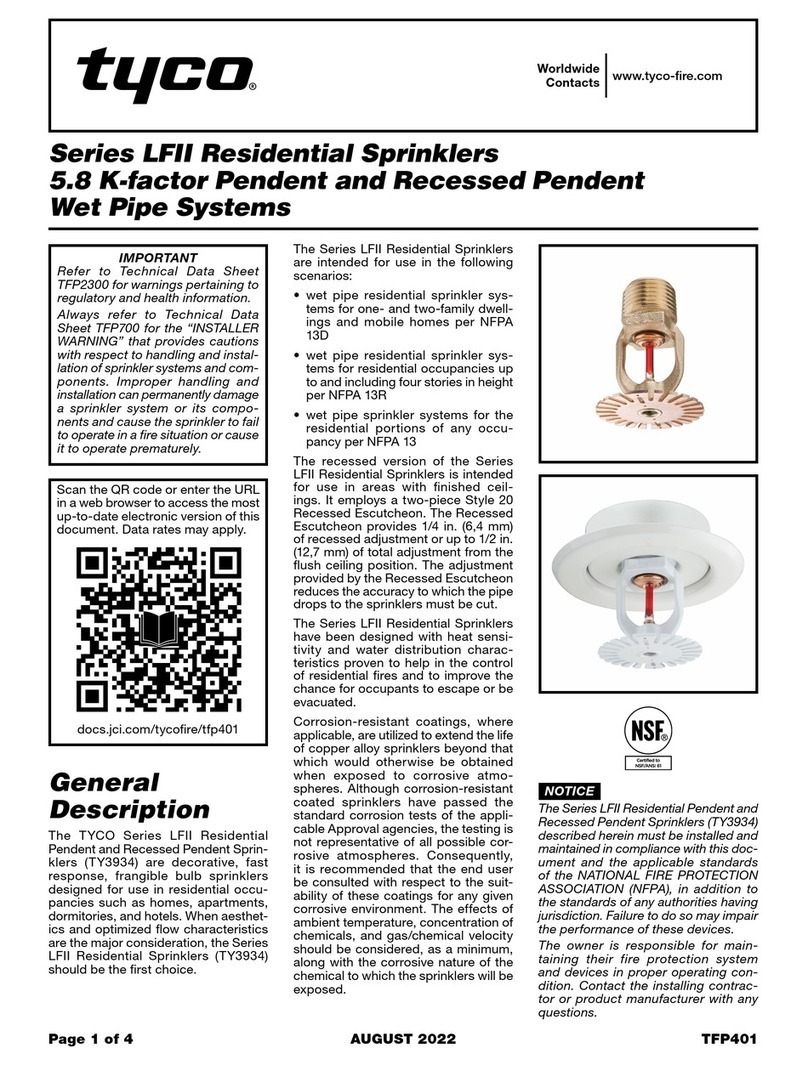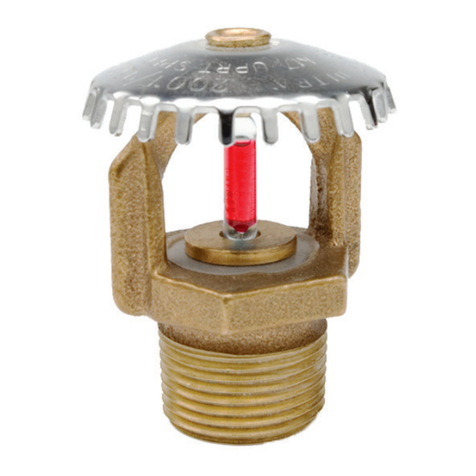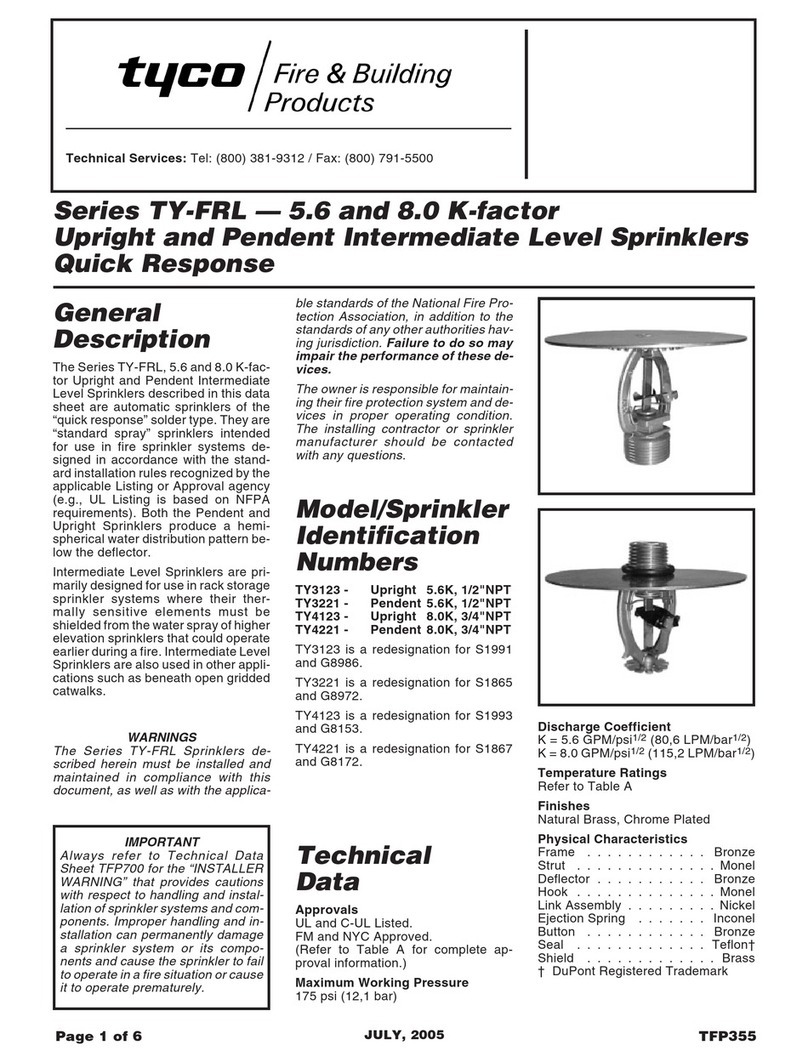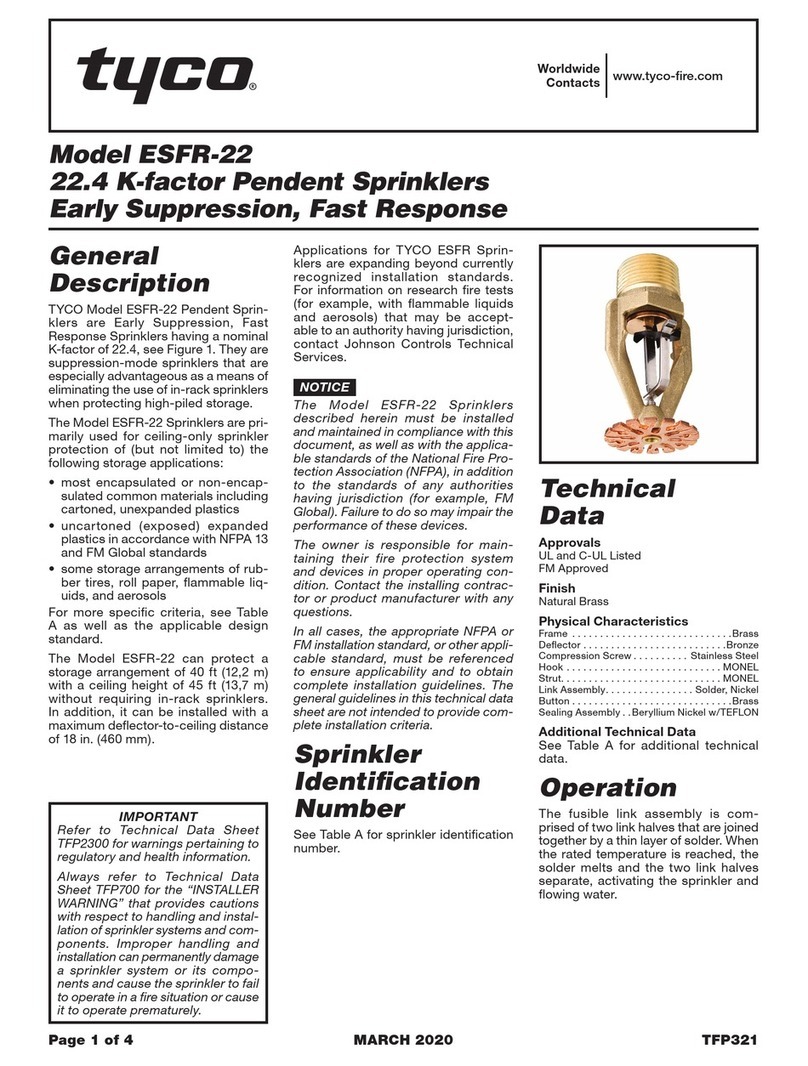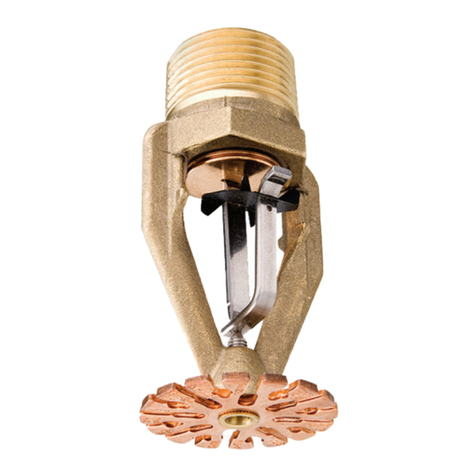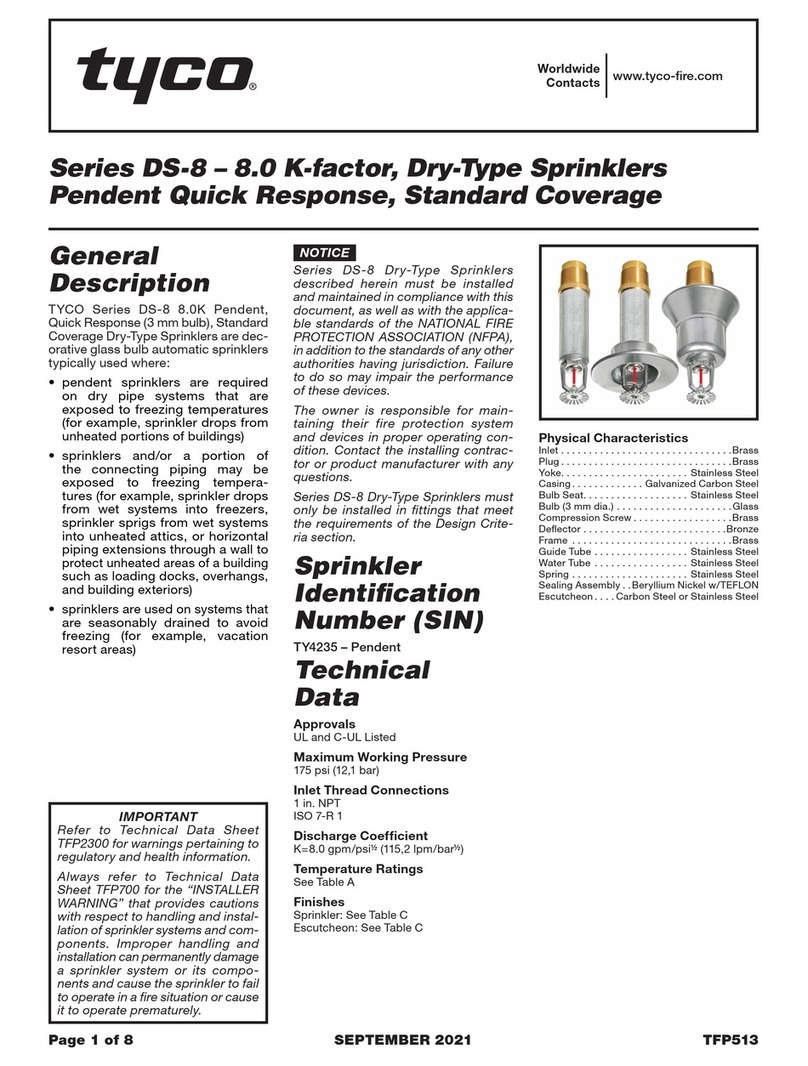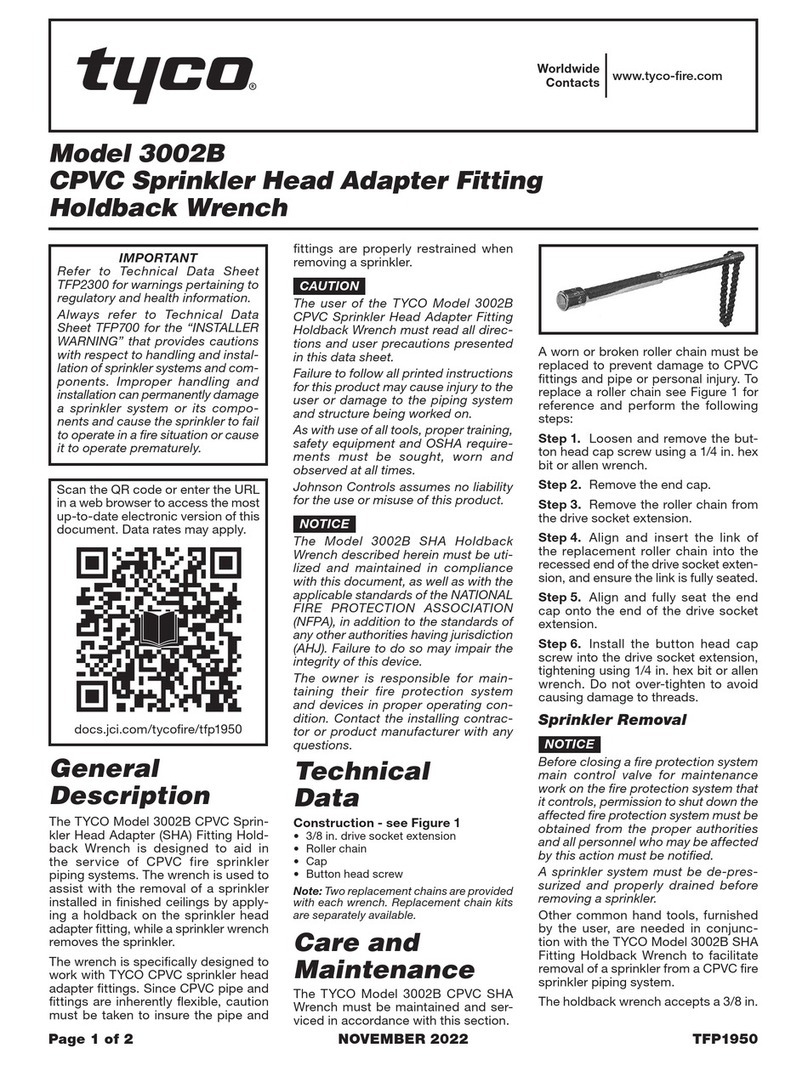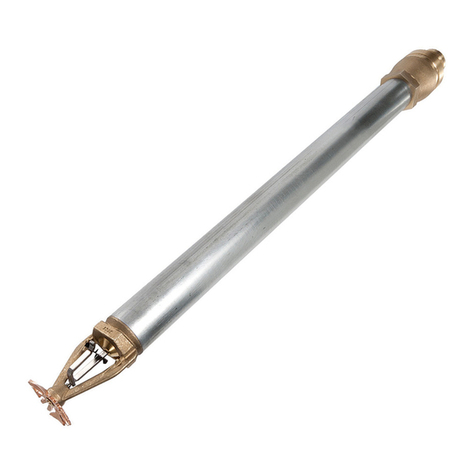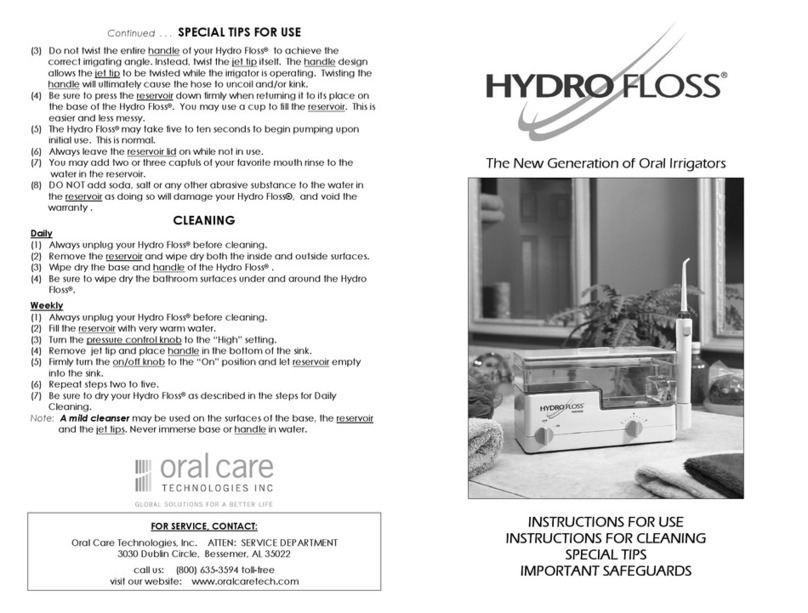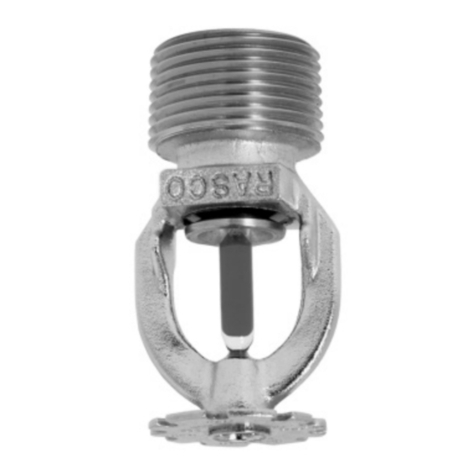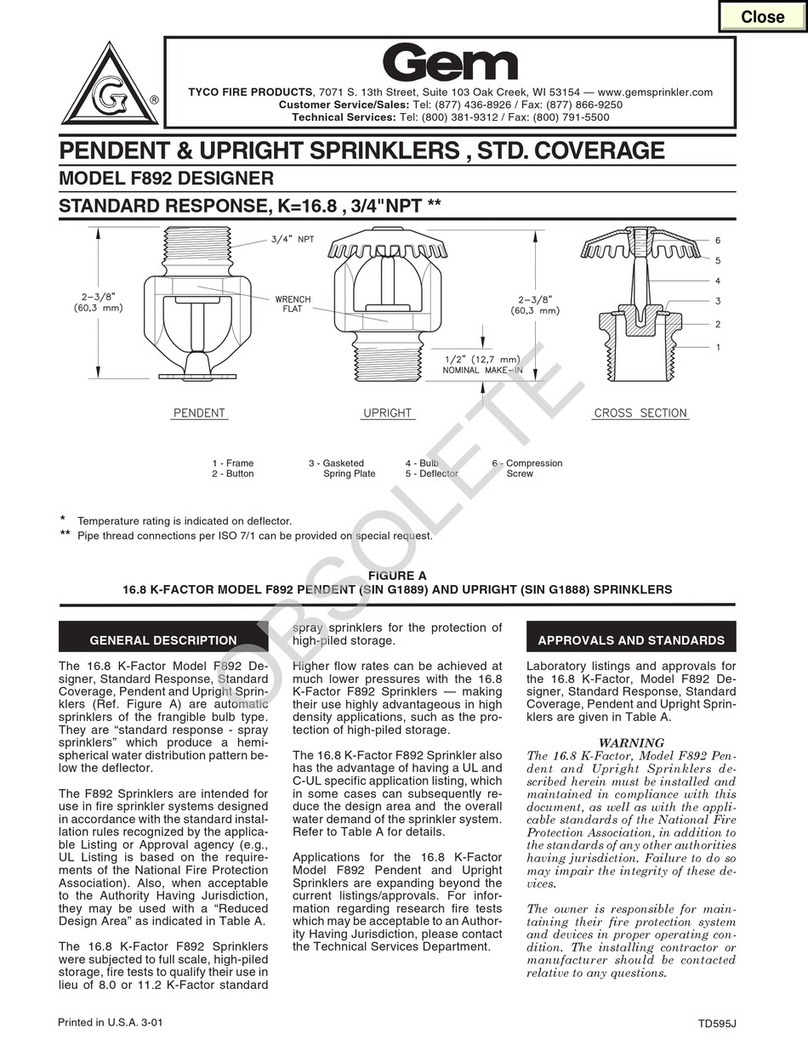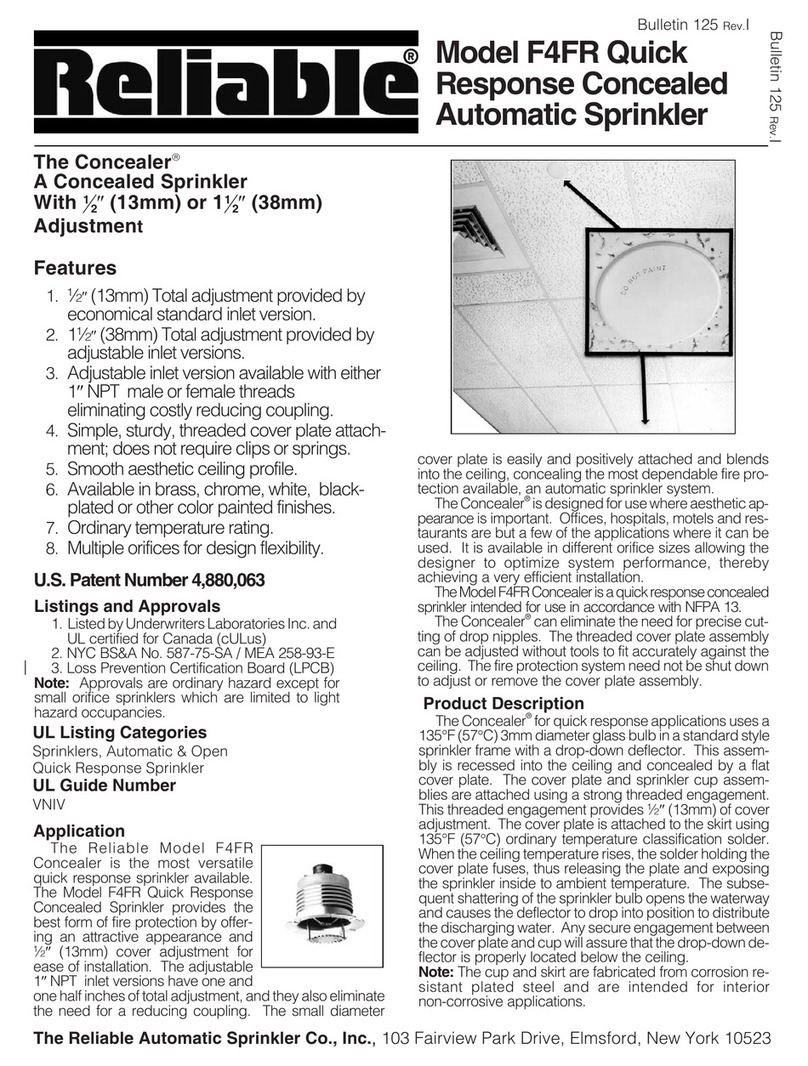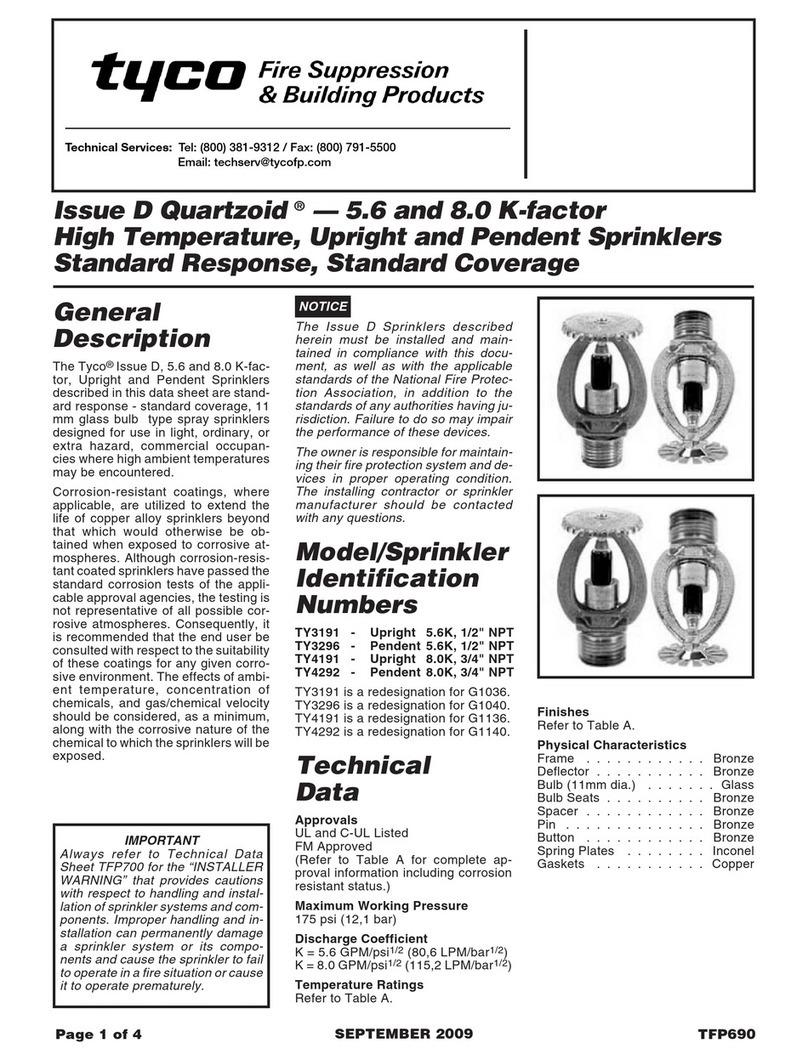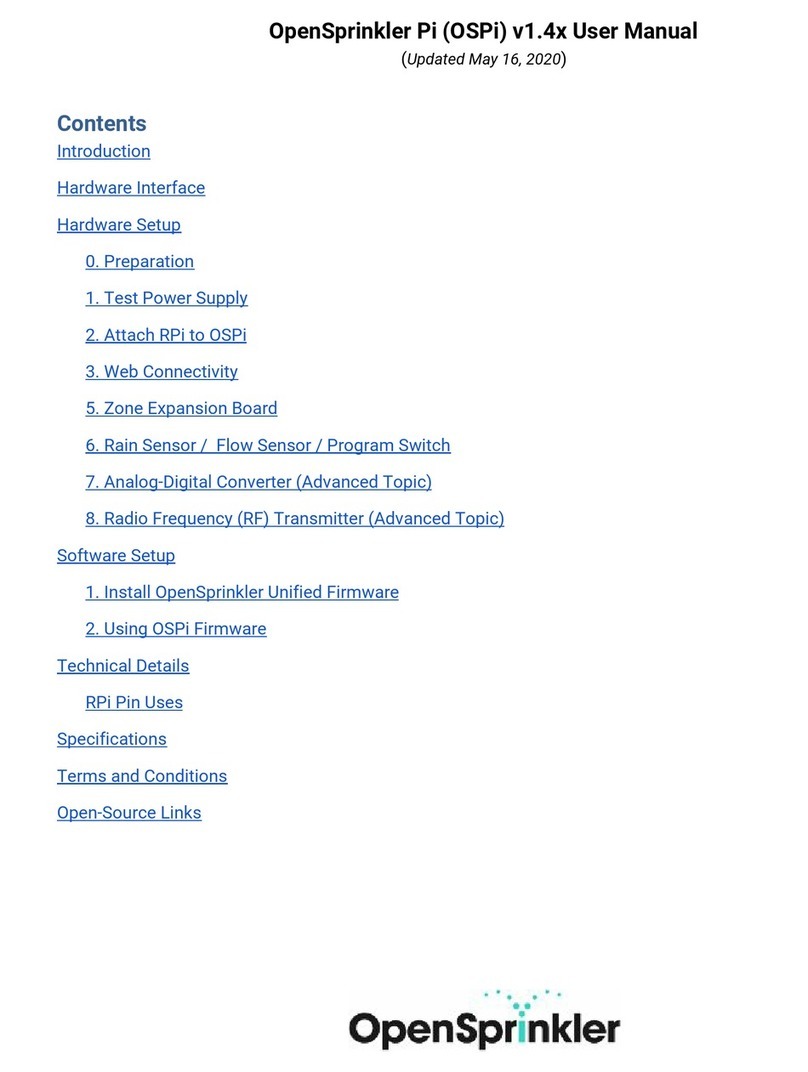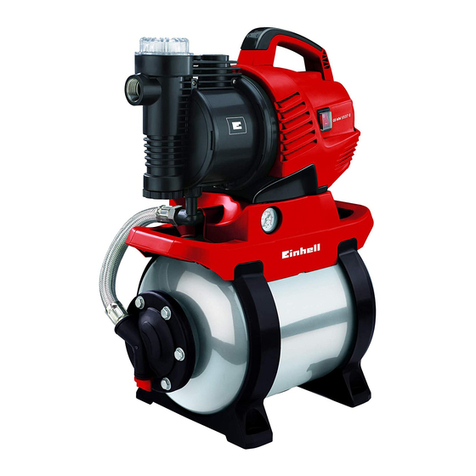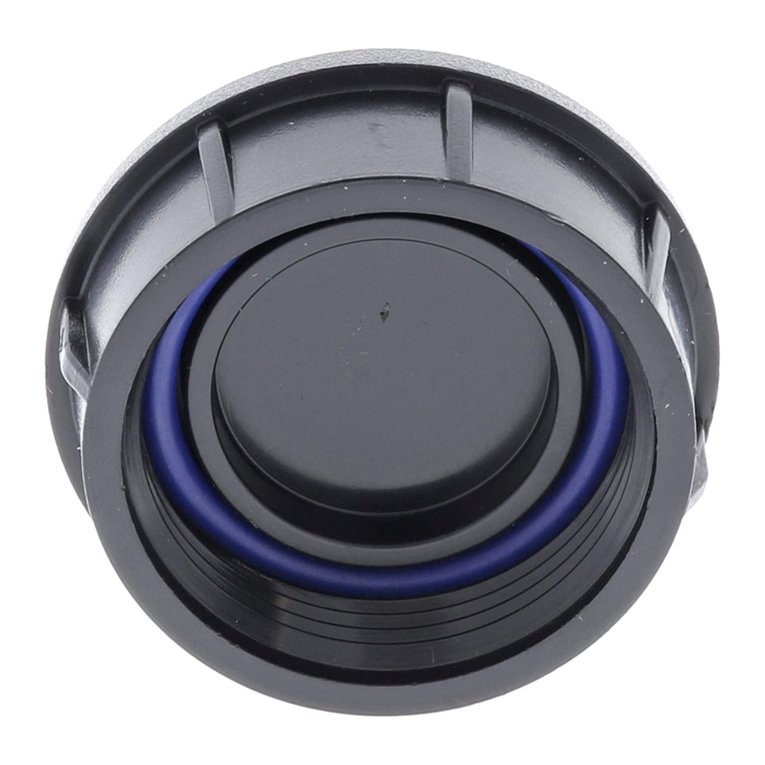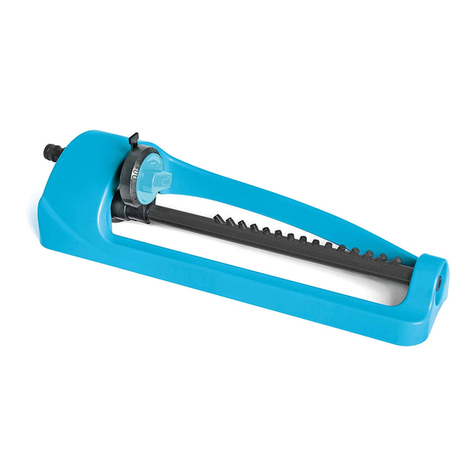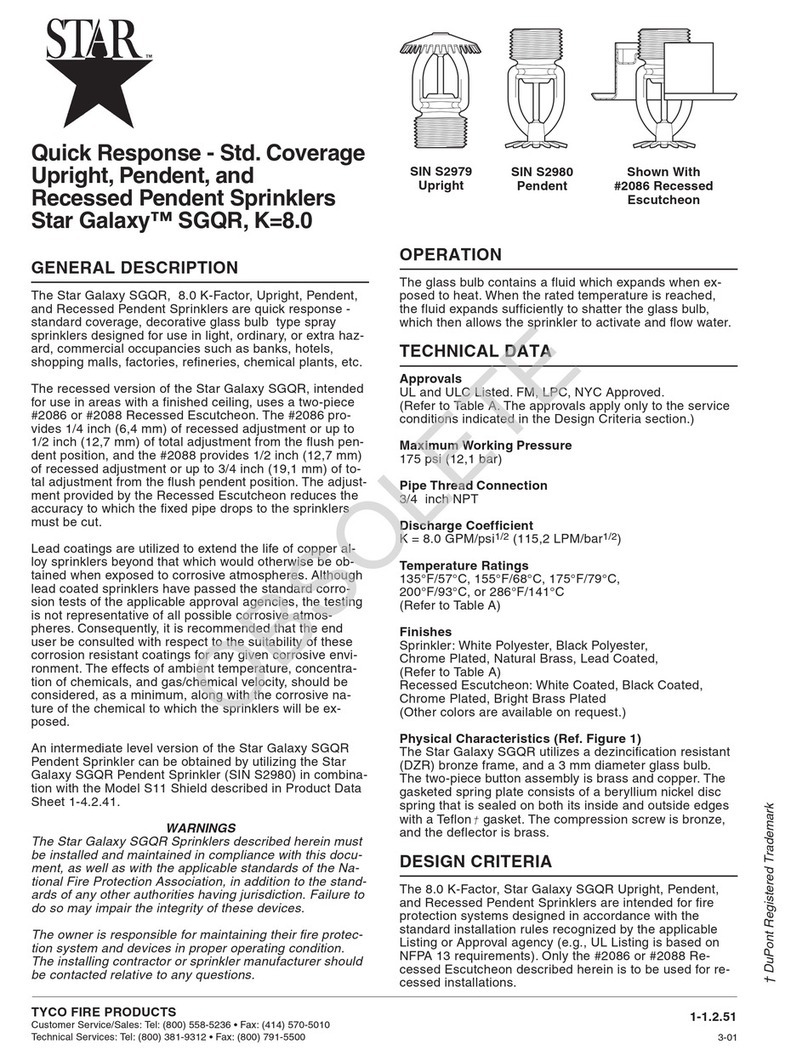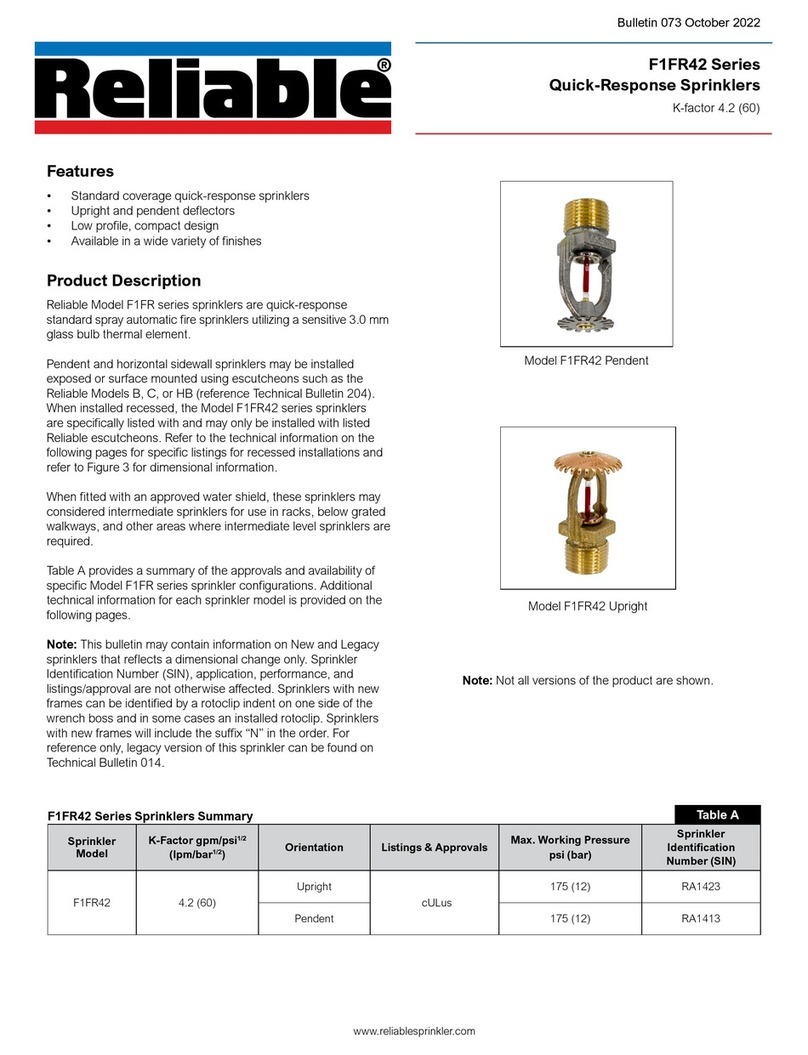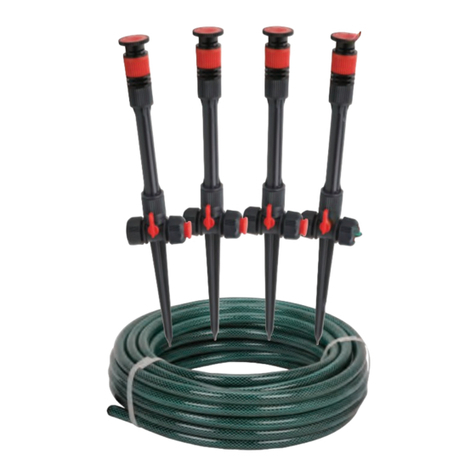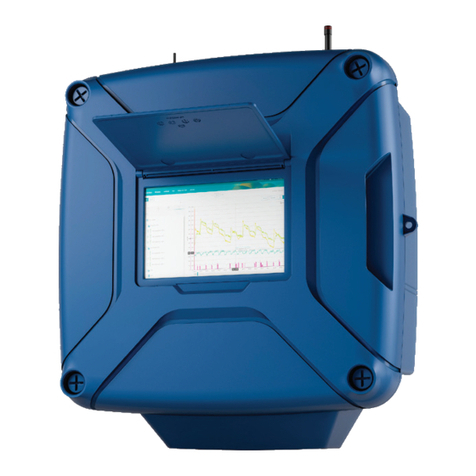
Installation
The Series DS-1 Dry Type Sprinklers
must be installed in accordance with
the following instructions:
NOTES
The Series DS-1 must only be installed
in fittings that meet the requirements
of the Design Criteria section.
Refer to the Design Criteria section for
other important requirements regard-
ing piping design and sealing of the
clearance space around the Sprinkler
Casing.
Do not install any bulb type sprinkler if
the bulb is cracked or there is a loss of
liquid from the bulb. With the sprinkler
held horizontally, a small air bubble
should be present. The diameter of the
air bubble is approximately 1/16 inch
(1,6 mm) for the 135°F/57°C rating to
1/8 inch (3,2 mm) for the 360°F/182°C
rating.
A 1 inch NPT sprinkler joint should be
obtained with a minimum to maximum
torque of 20 to 30 ft. lbs. (26,8 to 40,2
Nm). Higher levels of torque may dis-
tort the sprinkler inlet with consequent
leakage or impairment of the sprinkler.
Do not attempt to compensate for in-
sufficient adjustment in an Escutcheon
Plate by under- or over-tightening the
Sprinkler. Readjust the position of the
sprinkler fitting to suit.
Step 1. Pendent sprinklers must be
installed only in the pendent position,
and upright sprinklers must be in-
stalled only in the upright position. The
deflector of a pendent or upright sprin-
kler is to be parallel to the ceiling.
Horizontal sidewall sprinklers are to be
installed in the horizontal position with
their centerline of waterway perpen-
dicular to the back wall and parallel to
the ceiling. The word “TOP” on the De-
flector is to face towards the ceiling.
Step 2. With pipe thread sealant ap-
plied to the inlet threads, hand tighten
the sprinkler into the sprinkler fitting.
Step 3. Wrench tighten the sprinkler by
wrenching on the Casing with a pipe
wrench whenever the casing is readily
accessible. Otherwise, use a W-Type 7
Sprinkler Wrench (Ref. Figure 2). The
wrench recess of the W-Type 7 is to be
applied to the sprinkler wrench flats
(Ref. Figure 2).
Step 4. After the ceiling/wall has been
installed/finished, slide on the outer-
piece of the Escutcheon until it comes
in contact with the ceiling/wall. Do not
lift the ceiling panel out of its normal
position.
In the case of the outer piece of the
Deep Escutcheon, hold the outer
piece in contact with the mounting
surface (ceiling), and then rotate the
inner piece approximately 1/4 turn with
respect to the outer piece, to hold the
Deep Escutcheon firmly together.
Care and
Maintenance
The Tyco®Series DS-1 Dry Type Sprin-
klers must be maintained and ser-
viced in accordance with the following
instructions:
NOTES
Absence of the outer piece of an es-
cutcheon, which is used to cover a
clearance hole, may delay the time to
sprinkler operation in a fire situation.
Before closing a fire protection sys-
tem main control valve for mainte-
nance work on the fire protection sys-
tem that it controls, permission to shut
down the affected fire protection sys-
tems must be obtained from the prop-
er authorities and all personnel who
may be affected by this action must be
notified.
A Vent Hole is provided in the Bulb
Seat (Ref. Figure 1) to indicate if the
Dry Sprinkler is remaining dry. Evi-
dence of leakage from the Vent Hole is
an indication that there may be weep-
age past the Inlet seal and that the
sprinkler needs to be removed for de-
termining the cause of leakage (e.g. an
improper installation or an ice plug).
The fire protection system control
valve must be closed and the system
drained before removing the sprinkler.
Sprinklers that are found to be leaking
or exhibiting visible signs of corrosion
must be replaced.
Automatic sprinklers must never be
painted, plated, coated, or other-
wise altered after leaving the factory.
Modified sprinklers must be replaced.
Sprinklers that have been exposed to
corrosive products of combustion, but
have not operated, should be com-
pletely cleaned by wiping the sprin-
kler with a cloth or by brushing it with a
soft bristle brush.
Care must be exercised to avoid dam-
age - before, during, and after instal-
lation. Sprinklers damaged by drop-
ping, striking, wrench twist/slippage,
or the like, must be replaced. Also, re-
place any sprinkler that has a cracked
bulb or that has lost liquid from its bulb
(Ref. Installation Section).
The owner is responsible for the in-
spection, testing, and maintenance of
their fire protection system and devices
in compliance with this document, as
well as with the applicable standards
of the National Fire Protection Associ-
ation (e.g., NFPA 25), in addition to the
standards of any other authorities hav-
ing jurisdiction. The installing contrac-
tor or sprinkler manufacturer should be
contacted relative to any questions.
Automatic sprinkler systems should be
inspected, tested, and maintained by a
qualified Inspection Service in accor-
dance with local requirements and/or
national codes.
Page 6 of 8 TFP500
